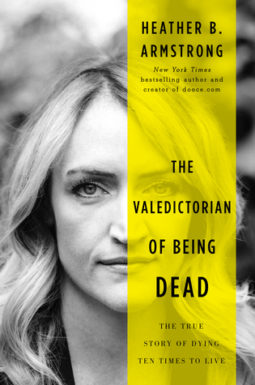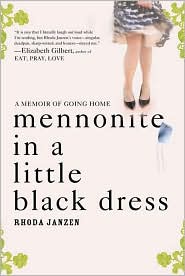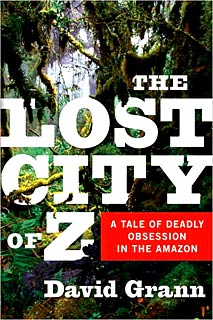This review contains affiliate links, which earn me a small commission when you click and purchase, at no extra cost to you. Thank you for supporting my small business and allowing me to continue providing you a reliable resource for clean book ratings.
This is another one of those books that I happened to read just at the right time. And it ended up being far more applicable to my life than I had expected; I only requested to read the ARC because I thought the idea of the study the author participated in sounded fascinating. As it so happened, I had more in common with the writer than I knew before I dove right in.
Heather B. Armstrong was a popular and successful “mommy blogger” (I never regularly read people’s blogs on mothering, though I was probably right in the key demographic during what I’d consider their “heyday,” so I’d never heard of her before reading this book), and she struggled with depression for decades. After one particularly bad bout of depression that lasted 18 months, in which Armstrong describes herself as “wanting to be dead” though she never thought of suicide, or, at least, actually taking her own life, her psychiatrist suggested she enter a trial that was happening at the University of Utah, very close to where she lived in Salt Lake City.
She would be the third person to be “put under” so deeply with the anesthetic propofol (yes, the one that killed Michael Jackson) that her brain activity would go down to almost nothing. The process involved 10 visits to the hospital over the course of just a few weeks, with doctors administering the medication and monitoring her brain waves and then bringing her back out of what essentially was a deep coma or near-brain death within an hour. The protocol had the same effect on the brain of essentially “jump-starting” it as happens with the seizures produced by electroshock therapy, but with far fewer side effects than that old but still effective treatment for depression that is resistant to medication.
Armstrong captures so well the feelings and ideas that are so common in those experiencing clinical depression, those that people who have not experienced it cannot fathom, and she relates her experiences with great insight, some wit and even great compassion. It’s clear as she says at the conclusion that she feels she has been given an opportunity to make a difference and to help others. She talks about being a single mom and working a couple of jobs and the anxiety of never being able to get things done. She opens a window into the depression, into the anxiety, into the hopelessness, and then into the tiny ray of hope the trial gave her at the beginning. And in sharing her experience, she is shining out that ray of hope for others, whether they are suffering as she did or they are watching loved ones go through this darkness of depression.
Interestingly enough, Armstrong also happens to have been raised a member of The Church of Jesus Christ of Latter-day Saints, or as a “Mormon,” and I am also a member of that faith. She says she became an atheist and believes in science, not in God, but her family members are all still strong and active Mormons. I have sometimes read about people who have left the church becoming bitter or having negative things to say about the church and its leaders and members, so I was particularly warmed by the way she wrote about the religion and her church-going loved ones in this book. She related some beautiful and poignant moments that happened in the course of her treatment and the faithful views of those moments shared by her family members, particularly her mother and two siblings, and I found myself deeply touched by what they all had to say. Her family had some issues along the way, and her family members aren’t perfect people, of course, but she is able to convey their weaknesses and all-too-human problems just as she relates how loving and good they are. Her mother and stepfather are especially loving and generous supports for her as she goes through the trial, and her love and appreciation for them shine from the pages.
Armstrong’s experience truly seems like a miracle; she found happiness again and broke out of the despair and darkness of depression after the treatments, and she still feels happy a year and a half later. I will look forward to hearing more about how trials progress and if this treatment can be used more widely to help more people. And I might pop over to Armstrong’s blog here and there to follow up with her. She’s a skilled writer and a person who wants to make a difference.
Rated: High, for about seven uses of strong language and more instances of moderate language. Sexual content is minimal, with the author talking about her regular jokes at each of her treatments that she hasn’t had any sex (because it is tied to a need for her to take medication for repeated UTIs), one reference to the idea of self-pleasuring, and some other occasional brief sexual references.
*I received an ARC in exchange for my honest review.
Click here to purchase your copy of The Valedictorian of Being Dead on Amazon.




